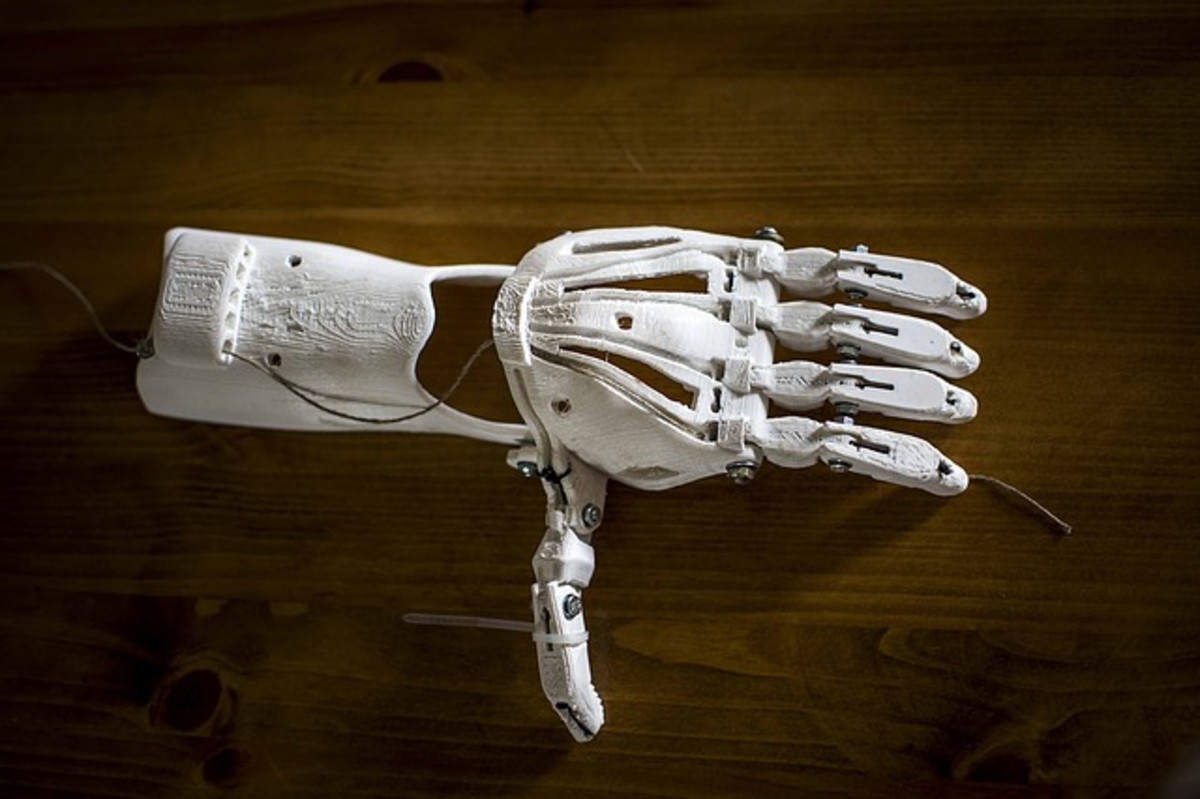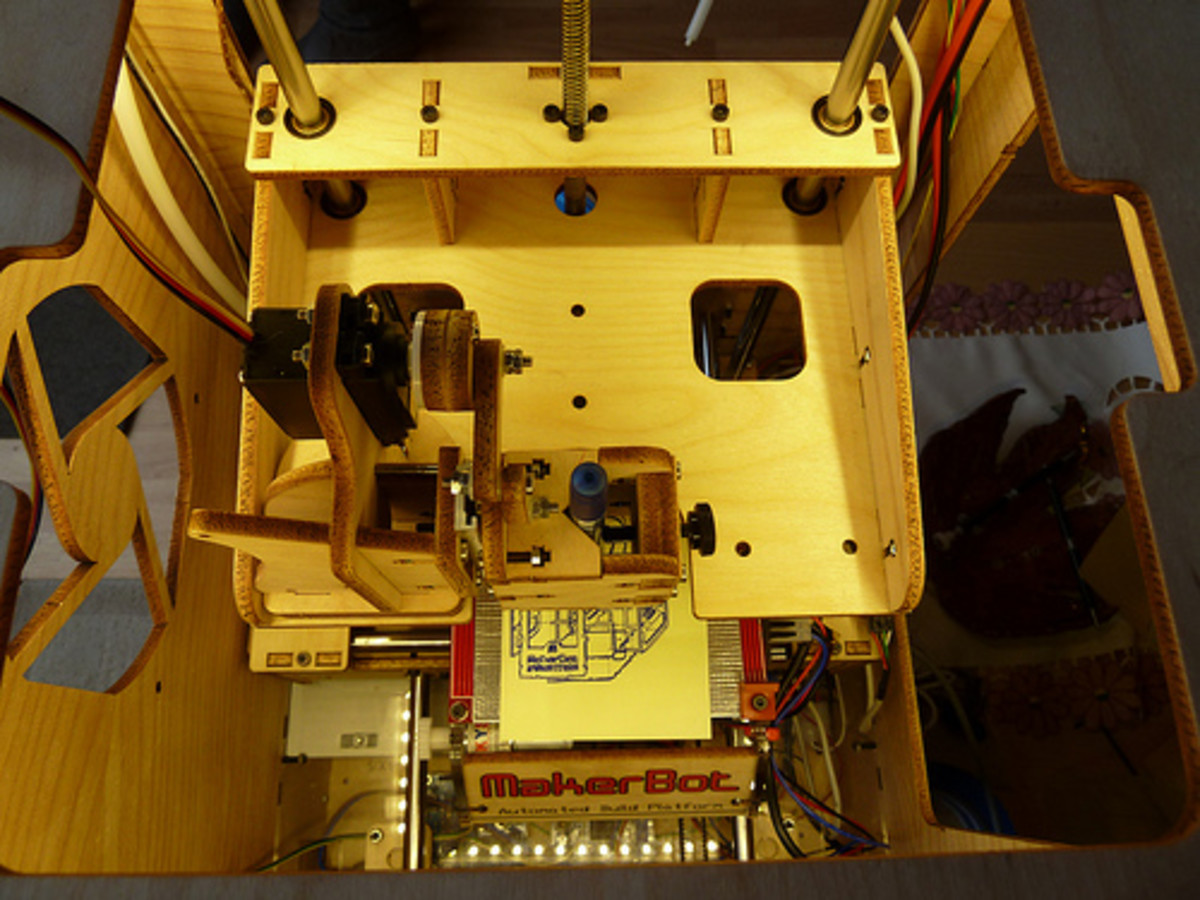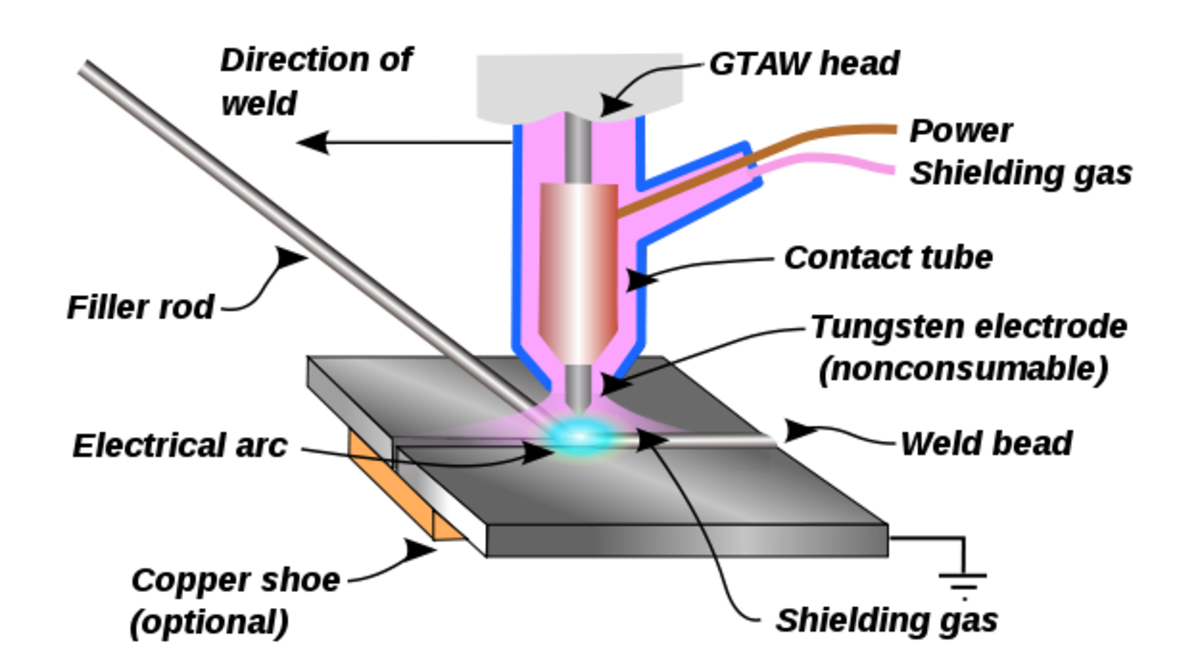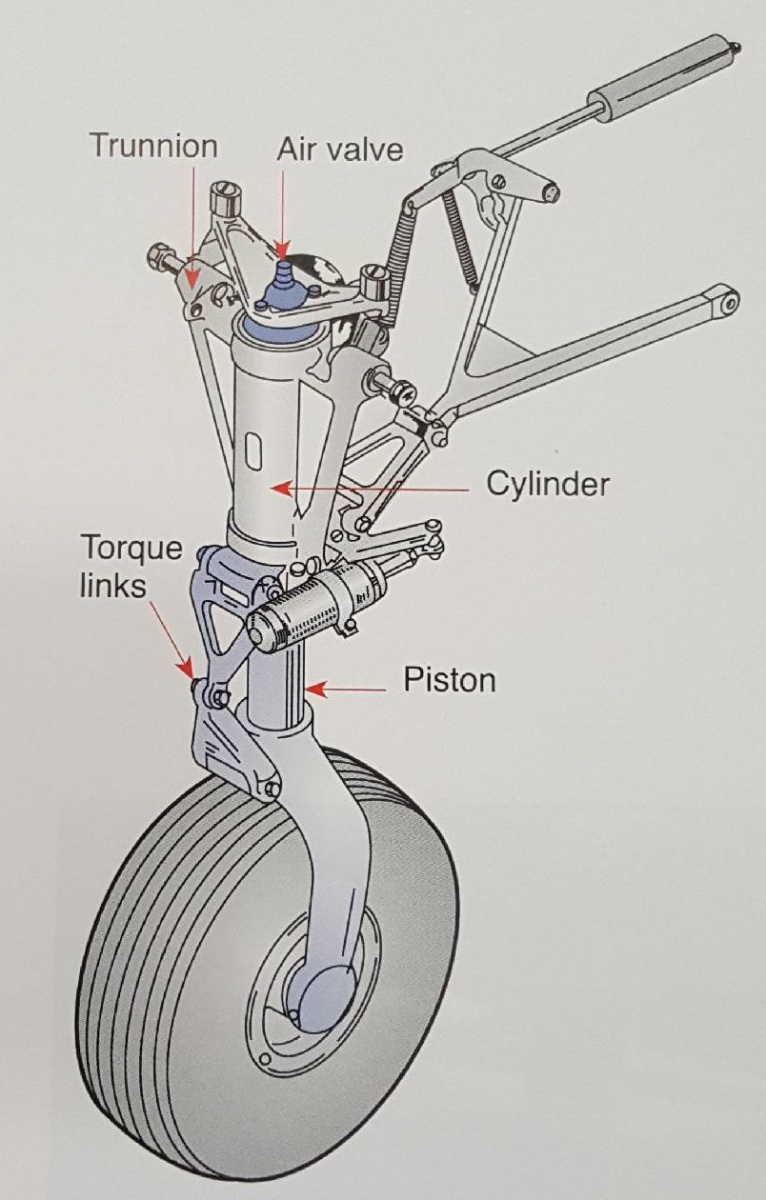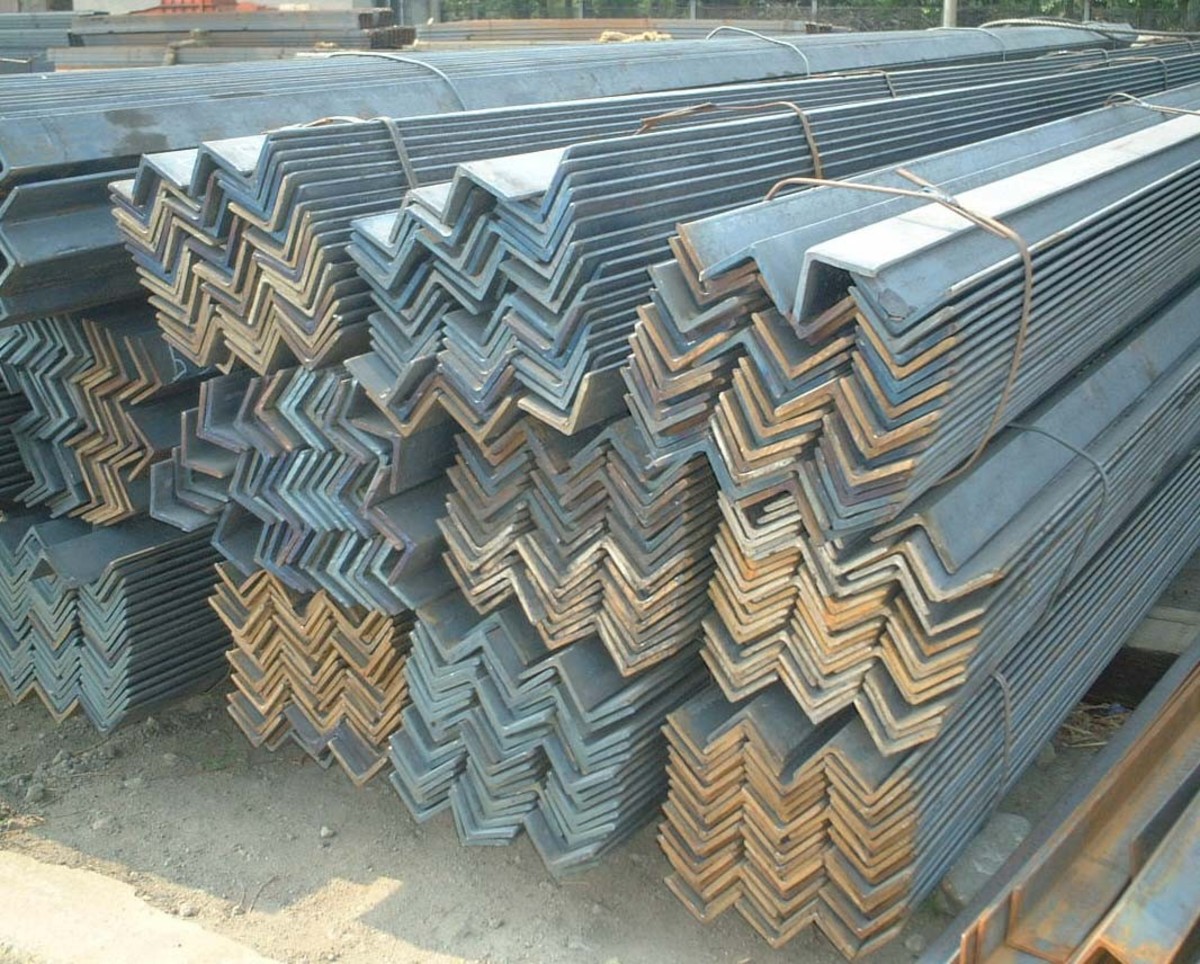What Is 3D Printing? How 3D Printers Are Changing Manufacturing
What Is 3D Printing? 3D Printing In a Nutshell
To grasp what 3D Printing is, think of a 2 dimensional (2D) paper printer. Instead of just making one pass over a piece of paper and providing a printed 2 dimensional image, a 3D Printer makes hundreds or thousands of passes over a work area. Each time a 3D Printer makes a pass it follows computer instructions and leaves a layer of material that eventually results in a finished 3 dimensional product. Whereas traditional manufacturing involves taking a raw block of material that is molded or carved to produce a finished product, 3D Printing ads materials on each pass to produce a finished product. For this reason, 3D Printing is technically known as “additive manufacturing.”
3D Printers are capable of making a wide variety of finished products, from the simple to the complex. They use raw materials that range from plastics to metals to paper products to create finished products, one layer at a time.
A Guitar Created Using a 3D Printer

The History of 3D Printing
3D Printing is not particularly new. What is new is its wider acceptance and use in the manufacturing of finished products. 3D Printing was invented during the 1980s by Charles W. Hull, who is known as Chuck Hull. Hull received a patent in Match 1986 from the United States Patent Office (U.S. Patent Number 4,575,330), which is titled “Apparatus for Production of Three-Dimensional Objects by Stereolithography.” Stereolithography is the technical term that Hull gave what is widely known as 3D Printing. After receiving the patent in 1986, Hull founded a company that he called 3D Systems to commercialize his patented 3D Printing concept. 3D Systems is currently the dominant company in the field of 3D Printing machines and services.
3D Printing developed slowly from rather modest initial uses to much more complex uses today. 3D Printing first became popular amongst product research and development teams within companies, because 3D Printers could be used to quickly create various prototypes to try out new design ideas for products under development. While 3D Printing is still used to make prototypes for product development efforts, advancements in computers and 3D Printing technology have slowly transformed 3D Printing into a technology that is used to manufacture finished products on demand. There are now several companies that produce 3D Printers and provide services related to 3D Printing to the growing number of manufactures that use 3D Printing technology in manufacturing plants.
3D Printing Gets a Big Boost From General Electric
3D Printing received a vote of confidence and a significant boost during 2013, when manufacturing titan General Electric (New York Stock Exchange (NYSE) symbol: GE) announced their intention to use 3D Printing technology to manufacture their next generation of jet engine fuel nozzles that are used in General Electric jet engines. The company is turning to 3D Printing to cut costs and to simplify the manufacturing process.
The new jet engine fuel nozzles will be created by a 3D printer in one piece, rather than the traditional assembly method that relies upon numerous suppliers that provide twenty pieces that are assembled into fuel nozzles. The jet engine fuel nozzles that are created using 3D Printing technology will be lighter, stronger, and more fuel efficient, since they will be built as one piece, rather than twenty different components. General Electric expects to manufacture 45,000 jet engine fuel nozzles per year using 3D Printing technology within a few years. One stumbling block is the fact that current 3D Printers are not capable of producing what General Electric wants on such a large scale, so the company is working with 3D printer manufacturers to develop a new generation of printers that are up to the task of mass production.
To get an idea about how a jet engine fuel nozzle is created using a 3D Printer, it takes approximately 3,000 repetitions to create General Electric’s fuel nozzle using a 3D Printer to manufacture the final product. The 3D Printer will pass over and leave a layer of material approximately 3,000 times to create the final jet engine fuel nozzles. To make it a reality, General Electric needs to install 3D Printers capable of performing the assigned task. The printers will take instructions from a computer program that tells the 3D Printers precisely where the raw materials need to be placed each time the 3 D Printers pass over the work space. The final result is a jet engine fuel nozzle.
A 3D Printer In Action
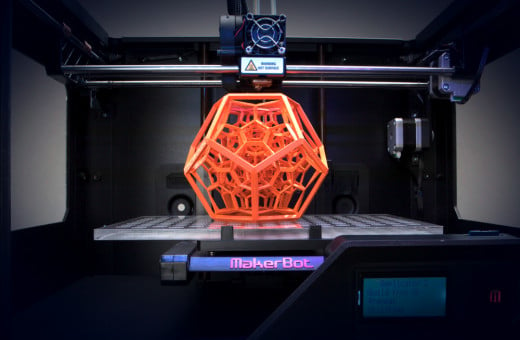
3D Printing Poll
Do You Think 3D Printing Will Change Manufacturing Significantly?
The Growth Prospects For The 3D Printing Industry
The growth prospects for the 3D Printing industry over the next several years are quite strong. 3D Printing has been gaining momentum for several years. General Electric’s announcement that they intend to use 3D Printers to mass produce jet engine fuel nozzles has given the entire industry a boost and will likely lead to more companies adopting 3D Printing manufacturing methods to produce products, as they realize 3D Printing can be utilized in practical manufacturing applications.
A leading industry research firm called Wohlers Associates found the worldwide market for 3D Printers and services was approximately $2.2 billion in 2012. This represents a 29% increase from the prior year. Wohlers Associates estimates the 3D Printing industry will grow revenues to approximately $6 billion annually by 2017, which translates into an extremely fast growth rate of over 30% annually.
3D Systems Is The Leader In 3D Printing

How To Invest In Companies Involved In 3D Printing
If you are interested in investing in 3D Printing, there are numerous publicly traded companies that manufacture 3D Printers and provide 3D Printing services. Below is a list of publicly traded companies that derive some or all of their revenues from 3D Printing. The potential of the 3D Printing industry has already caught the attention of Wall Street, and as a result, many of the stocks of publicly traded companies involved in 3D Printing have rallied to lofty trading levels. Investors should be careful, since the valuation of many 3D Printing stocks may have gotten ahead of reasonable traditional valuation levels.
- 3D Systems Corp. trades on the NYSE under symbol DDD. Founded by the creator of 3 D Printing, Chuck Hull, the company has been the dominant company in 3D Printing for years. The company is involved in the development and manufacturing of 3D Printers, and related materials and services.
- Stratasys Ltd. trades on the NASDAQ under symbol SSYS. The company provides 3D Printing manufacturing and services used in the design and manufacturing of finished products.
- Hewlett-Packard Company trades on the NYSE under symbol HPQ. The company is one of the largest 2D printer manufactures in the world. Hewlett-Packard is entering the 3D printer market with the intent to make 3D printing faster and cheaper.
- Voxeljet trades on the NYSE under symbol VJET. The company is based in Germany. It manufactures and sells 3D Printers and parts used by 3D Printers.
- The ExOne Company trades on the NASDAQ under symbol XONE. The company is sells 3D Printers and products related to 3D Printing.
- Organovo Holdings, Inc. trades on the NYSE under symbol ONVO. The company is researching the use of 3D Printing to develop biotechnology based human tissue substitutes for research and real world applications.
- Sigma Labs, Inc. trades on the Over The Counter market under symbol SGLB. The company engages in the development and commercialization of additive manufacturing technologies and materials.
- Arcam AB trades on the Over The Counter market under symbol AMAVF. The company is based in Sweden. One of the leaders in 3D Printing, the company focuses on delivering 3 Printer produced metal parts for the aerospace and medical implant industries.
Investors looking to invest in the 3D Printing sector via Exchange Traded Funds (ETFs) cannot invest in an ETF that is dedicated to the 3D Printing sector at this time; however, a fund called The First Trust Technology AlphaDEX Fund (NYSE: FXL) offers a way to invest in the 3D Printing sector through a fund since two of the fund’s top holdings are 3D Systems and Stratasys.
Also of note, there is an index called the STOXX® Global 3D Printing Tradable Index that tracks the performance of companies involved in 3D Printing. The index is composed of the top thirty companies involved 3D Printing that generate at least 1% of their revenue from 3D Printing products or services.
Disclaimer: This article was not written by a financial professional or a registered financial advisor. This article is for informational purposes only, and is not intended to be solicitation or recommendation to purchase any stocks or ETFs mentioned herein. Please consult a registered financial advisor to ensure you understand the risks and rewards associated with buying and selling stocks, ETFs, and other financial products.
Books About 3D Printing
Will 3D Printing Change the World?
This content is accurate and true to the best of the author’s knowledge and is not meant to substitute for formal and individualized advice from a qualified professional.
© 2013 John Coviello




